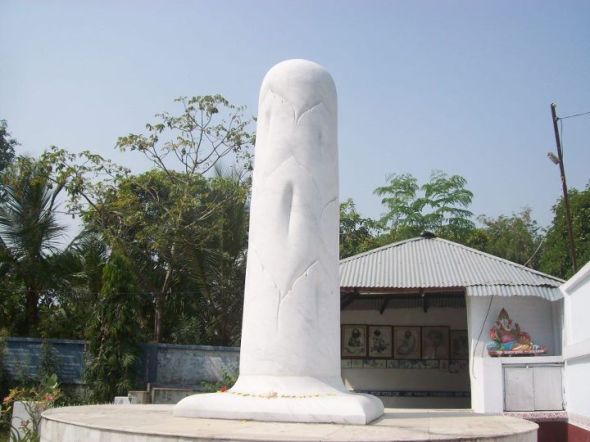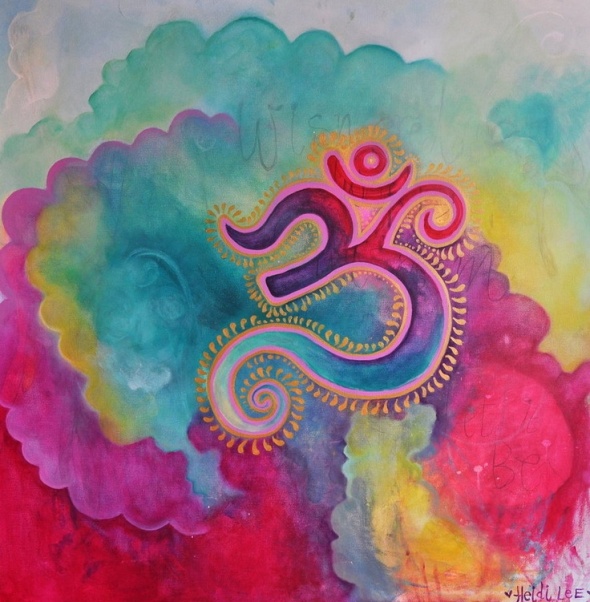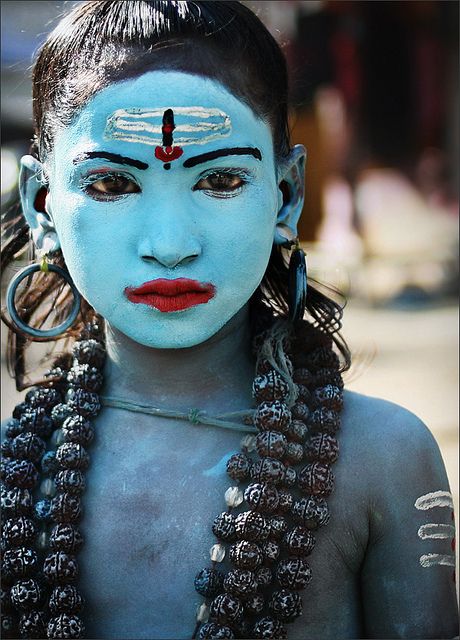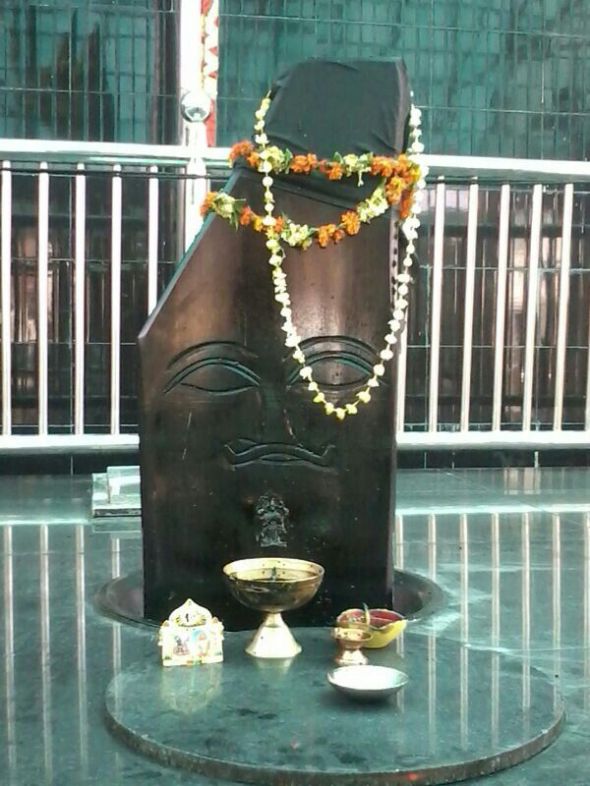On the occasion of Teej, Goddess Parvati is worshiped by seekers for martial bliss and happiness. Teej is also referred as the festival of swings.Teej is held every year during the Hindu Month of Shravan (July or August) and marks the advent of monsoons. When the monsoon rains fall on parched land, the pleasing scent of wet soil rises into the air and spirits soar high in celebration. Song & dance mark the gaiety of the Teej festival. Women’s observe this festival by fasting and praying to Lord Shiva and Goddess Parvati for a happy married life.

A Great collection of India mythology, mythology" is a collection of stories associated with a culture or institution or person. and in another form A myth is a religious story that involves a higher power or entity. The gods, goddesses, and other supernatural beings who appear in myths are worshipped or revered.
Showing posts with label Parvati. Show all posts
Showing posts with label Parvati. Show all posts
Monday, 15 December 2014
Teej – The festival of swings
Sunday, 14 December 2014
The Shiva Linga

The legend of Shiva Linga or Lingodbhavamurthy is deeply related to Mahashivaratri. The legend narrates the story of vain search by Brahma and Vishnu to discover the Aadi (beginning) and the Antha (end) of Lord Shiva. The legend thus proves the supremacy of Lord Mahadeva over other Hindu Gods and explains why the lingam is believed to be one of the most potent emblems in Hindu ideals. The story is stated in the three of the puranas – the Kurma Purana, the Vayu Purana and Shiva Purana

According to Puranas, once the other two of the triads of Hindu Gods, Brahma and Vishnu were fighting over each other’s prowess. Horrified at the intensity of the battle, the other gods asked Shiva to intervene. To make them realize the futility of their fight, Lord Shiva assumed the form of a flaming Linga in between Brahma and Vishnu and challenged both of them by asking them to measure the gigantic Linga (phallic symbol of Lord Shiva). Awestruck by its magnitude, Brahma and Vishnu decided to find one end each to establish supremacy over the other. Lord Brahma took the form of a swan and went upwards while Lord Vishnu assumed the form of Varaha – a boar and went into the earth towards nether land. Both searched for thousands of miles but neither could find the end.

Om Namah Shivaya


Om or Aum is the pranava or seed mantra of all mantras. The two syllables na- and mah- can be translated as “I humbly bow to you”. The three syllables shi-vaa-ya invoke Lord Shiva and all his energies to bless us and lead us to the highest state of peace and meditation. The mantra should ideally be chanted twice a day (morning and evening) for 108 times each. The two words, namah and shivaya, are also referred to as the panchakshara (five letter) chant. It is said that those who chant these five holy letters while meditating on Lord Shiva will be blessed by visions of Shiva – the Lord of the yogis.
lord of the cremation – Shiva

Shiva, the third god of the Hindu triadition, has three eyes, the third one (between the eyebrows) being usually closed, except at the time of destruction of things. He wears long hair, supports the holy Ganga river on his head and the crescent moon on his matted hair. He has two to four arms, holds a trident in his hand, is naked except for a tiger-skin, besmears himself with ash and is decorated with snakes on his head, neck and arms. He is very fair-coloured but has a blue throat due to his having drunk poison during the time of the churning of the ocean by the gods. In his other hands he holds an axe, an antelope, and an hour-glass shaped drum called a ‘damru’. He wears a garland of skulls and is also known as the lord of the cremation grounds. His consort is Parvati and he is the father of Ganesha and Skanda (Kartikeya). His vehicle is the bull called Nandi.
The Mahamrityunjaya – Victory from death
 .
.
Mahamrityunjaya Mantra is one among the finest Mantra’s in Indian Mythology and Spirituality belongs to Lord Shiva.It is a combination of three hindi language words i.e. “Maha” which means Great , “Mrityun” means Death and “Jaya” means Victory which turns into Conquer or victory over death. It is also known as “Rudra Mantra” or “Trayambakam Mantra”. Rudra refers to Lord Shiva.
Om Trayambakam Yajamahe, Sugandhim Pushti Vardhanam,
Urvarukmiv Bandhanat, Mrityurmokshaya Mamratat.
त्रयम्बकं यजामहे सुगन्धिं पुष्टिवर्धनम् ।
उर्वारुकमिव बन्धनान् म्रुत्योर्मुक्षिय मामृतात् ॥
The Shani Dev – one of the nine Navagraha or planets

ShaniDev is one of the (Planet)”Navagraha ”which are the nine primary celestial beings in Hindu astrology, or Mtyhs. The word Shani (Saturday) also denotes the Seventh day or Saturday in most Indian languages.Shanaye Kramati – the one who moves slowly, as Saturn takes about 30 years to rotate around the Sun. Shani is also known as Shanaiscarya, Shani Bhagavan, Shaneesvara, Saneesvara, Shaneesvaran, Shani Deva.
Shani is a Lord and son of Surya (the Sun God) and his wife Chhaya (goddess of Shadow) and hence also known as Chayyaputra. He is the cousin of Yama, the Hindu God of death. It is said that when he opened his eyes as a baby for the very first time, the sun went into an eclipse, which clearly denotes the impact of Shani on astrological charts. He is known as the greatest teacher. He is known in Hindu scriptures as the greatest trouble maker as well as the greatest well wisher. He is depicted dark in colour, wearing cloths in black, holding a sword, arrows and two daggers and variously mounted on a black vulture or a raven.
The Sura Dev – The maker of day

Surya (Sun God) is the chief solar deity in Hinduism.In Hindu religious literature, Surya is notably mentioned as the visible form of God that one can see every day.Surya is the son of Sage Kashyapa and Aditi.He has two wives Samnja and Chaya.Surya is, the ruler of the worlds, who is crowned with rays, who appears at the horizon, who is greeted by gods and demons, and brings light.He constitutes created beings, He is the life-breath, the source of the seasons, the store-house of light, an offspring of Aditi, the progenitor, the Sun-God, the courser in the heavens, the nourished, the possessor of rays, the golden, the brilliant, the One whose energy constitutes the seed of the universe and the maker of day.
Goddess Parvati

Goddess Parvati is regarded as the power and divine consort of Lord Shiva – the Destroyer. Like her consort Shiva, Goddess Parvati is said to have both mild and terrible aspects.The appearance of Goddess Parvati will vary depending on whether she is depicted alone or with Lord Shiva. When she is depicted along with Lord Shiva she has two hands with a blue lotus in her right hand and the left hand by her side.Kali is the first representation of Goddess Parvati and she was known as the destroyer. She is also known as the Goddess of time.
Subscribe to:
Posts (Atom)